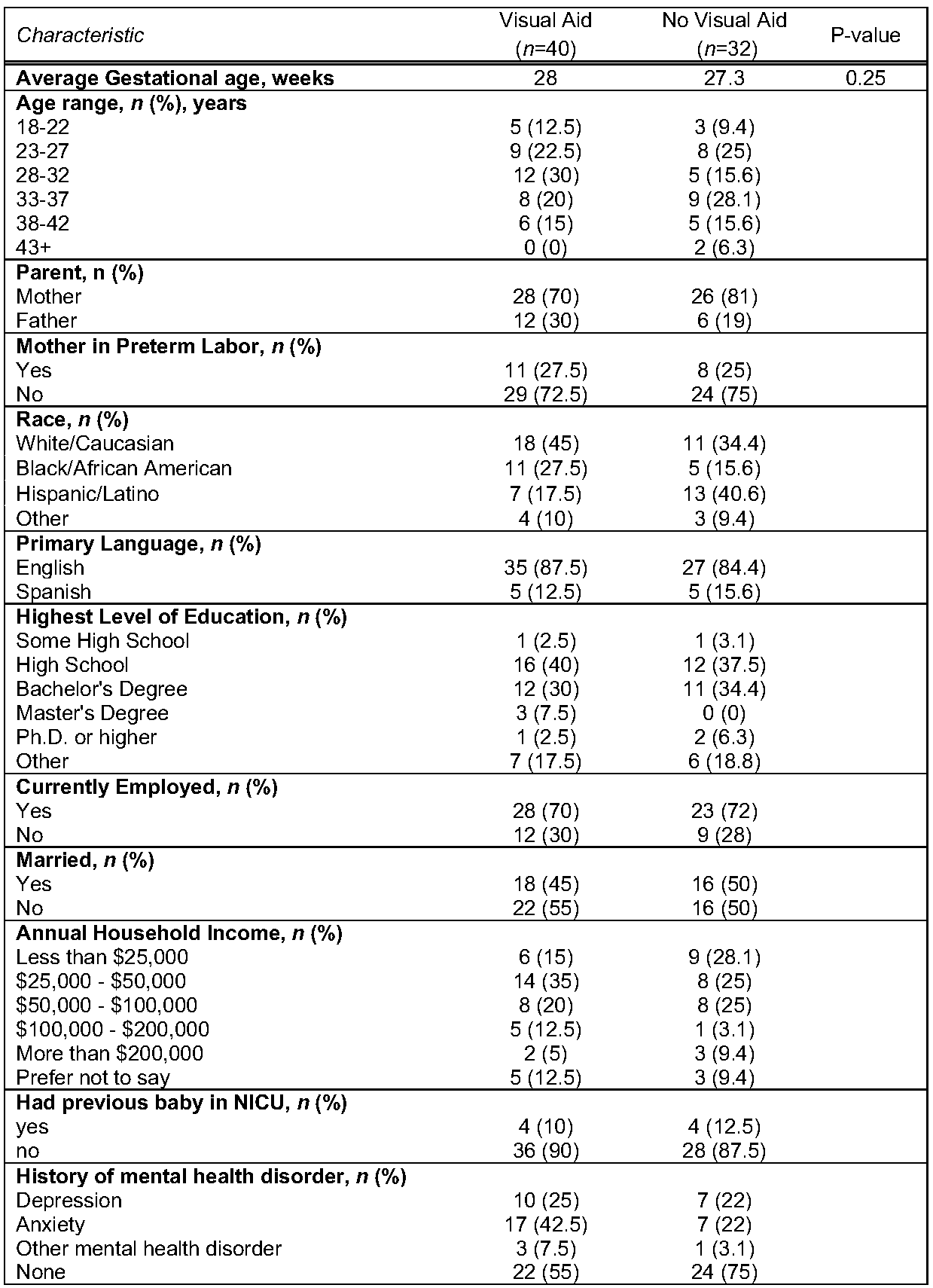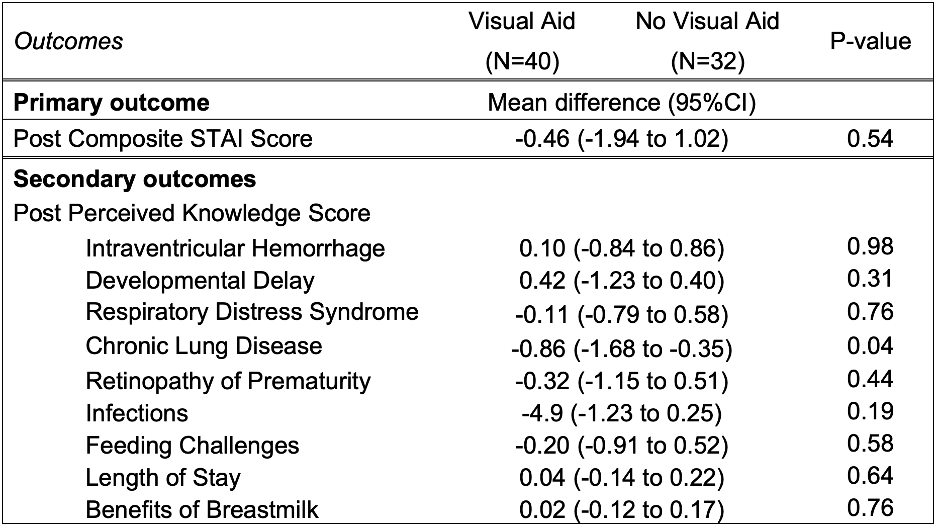Neonatology
Session: Neonatal-Perinatal Health Care Delivery: Practices and Procedures 3
469 - Supplementing Prenatal Consults for Prematurity with Visual Aids and Impact on Parental Anxiety and Understanding – A Randomized Controlled Trial
Monday, May 6, 2024
9:30 AM - 11:30 AM ET
Poster Number: 469
Publication Number: 469.3233
Publication Number: 469.3233

Alexia Eiges, MD (she/her/hers)
Neonatal-Perinatal Medicine Fellow
USF Health Morsani College of Medicine
Tampa, Florida, United States
Presenting Author(s)
Background: Prenatal consults allow neonatologists to develop rapport with parents while explaining complications their infants may encounter. Some factors contributing to poor comprehension and parental anxiety include maternal labor, medications, time of day, and fear. Written material and visuals aids enhance knowledge acquisition, yet it is uncommon for providers to utilize them during prenatal consults.
Objective: To determine if the use of a visual aid during prenatal consults for prematurity improves parental anxiety and perception of understanding complications associated with prematurity.
Design/Methods: Gravid women between 22-32 weeks’ gestation receiving prenatal consultation by the NICU were randomized to consults with or without visual aids. Mothers and partners (if applicable) completed pre-post consult surveys to assess their pre-post anxiety state and their perceived knowledge of potential complications associated with prematurity. Demographic and clinical information was collected from all participants. Statistical analysis was performed using IBM SPSS 29.0. P-value < 0.05 was considered statistically significant for all analyses. The difference in post intervention continuous outcomes across the compared groups was assessed using the generalized linear model and adjusted for baseline scores.
Results: Baseline participant characteristics were similar across groups. Pre-test scores were also similar. There was no significant difference in infant gestational age between the intervention and control group (GA 28 weeks ± 3 vs GA 27 weeks ± 2.6; p=0.25). After consultation, a decrease in composite anxiety scores was noted, however the difference was not statistically significant.
Conclusion(s): The use of visual aids during prenatal consults did not show a significant impact on parental anxiety or perception of prematurity knowledge. However, our study was not powered for a change in perception of knowledge but rather based on previous studies for composite State Trait Anxiety Index (STAI) scores which did not have a power analysis. Future studies will require a greater sample size to measure if visual aids improve anxiety and knowledge acquisition.


